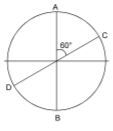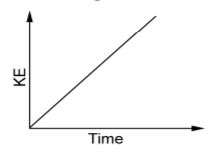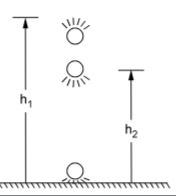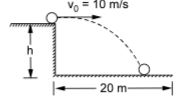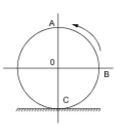 Introduction
Introduction
Engineering mechanics is the application of mechanics to solve problems involving common engineering elements. Engineering mechanics is an important topic in Mechanical Engineering subjects. Engineering mechanics Practice Quiz article, is exceedingly important for candidates preparing for RRB Junior Engineer Recruitment, SSC Junior Engineer Recruitment, UPSC (Civil services exam including IAS) and all Mechanical Engineering Exams and etc. In this article, candidates can find different types of questions with solution related to the Engineering mechanics topic. The article Engineering mechanics Practice Quiz, will assist the students understanding of the type of questions expected from the topic Engineering mechanics Practice Quiz .
 Quiz
Quiz
1. Two blocks with masses M and m are in contact with each other and are resting on a horizontal friction-less floor. When horizontal force is applied to the heavier, the blocks accelerate to the right. The force between the two blocks is
- A. (M + m) F/m
B. MF/m
C. mF/M
D. mF/(M + m)
- A. Shear centre
B. Meta centre
C. Instantaneous centre
D. Gravitational centre
- A. [latex]\frac{{m}_{1}}{{m}_{2}}[/latex]
B. [latex]\frac{{m}_{1}{h}_{1}}{{m}_{2}{h}_{2}}[/latex]
C. [latex]{(\frac{{h}_{1}}{{h}_{2}})}^{\frac{1}{2}}[/latex]
D. [latex]{(\frac{{h}_{1}}{{h}_{2}})}^{2}[/latex]
- A. [latex]\frac{t}{3}[/latex]
B. [latex]\frac{t}{\sqrt{3}}[/latex]
C. [latex]\frac{t}{2}[/latex]
D. [latex]\frac{t}{4}[/latex]
- A. 1 : [latex]\sqrt{3} [/latex]
B. [latex]\sqrt{2}[/latex] : 1
C. 1 : [latex]\sqrt{2} [/latex]
D. [latex]\sqrt{3}[/latex] : [latex]\sqrt{2}[/latex]
- A.
B.
C.
D.
- A. 1 : 8
B. 1 : 2
C. [latex]\sqrt{2}[/latex] : 1
D. [latex]\sqrt{2}[/latex]
- A. Heavy body
B. Light body
C. Both have equal momentum
D. It depends on the actual velocities.
- A. are no forces present
B. are no magnetic forces present
C. is no net force on the system
D. are no torques present
- A. directly proportional to velocity
B. inversely proportional to velocity
C. zero
D. constant
- A. 1
B. 0.5 to 1
C. 0 to 0.5
D. zero
- A. [latex]\frac{{h}_{1}}{{h}_{2}}[/latex]
B. [latex]\frac{{h}_{1}}{2{h}_{2}}[/latex]
C. [latex]\sqrt {\frac{{h}_{1}}{2{h}_{2}}}[/latex]
D. [latex]\sqrt {\frac{{h}_{2}}{{h}_{1}}}[/latex]
- A. [latex]{m}_{1} > {m}_{2}[/latex]
B. [latex]{m}_{1} < {m}_{2}[/latex]
C. [latex]{m}_{1} = {m}_{2}[/latex]
D. None of these
- A. [latex]\frac{4r}{3\pi}[/latex]
B. [latex]\frac{3 \pi}{4r}[/latex]
C. [latex]\frac{4 \pi}{3r}[/latex]
D. [latex]\frac{2\pi}{3r}[/latex]
- A. 30º
B. 45º
C. 60º
D. 90º
1. Two stones are projected with the same velocity (in magnitudes) but making different angles with the horizontal. If their ranges are equal and the angle of projection of one is 600, then the ratio of the maximum heights attained ( [latex]\frac{{y}_{2}}{{y}_{1}}[/latex]) will be
- A. 3 : 1
B. 2 : 1
C. 1 : 2
D. 1 : 3
- A. 18 m
B. 20 m
C. 22 m
D. 24 m
- A. 1 : 2
B. 1 : 1
C. 1 : [latex]\sqrt{3} [/latex]
D. [latex]\sqrt{2} : 1[/latex]
- A. 0.25R
B. 0.5R
C. 0.75R
D. R
- A. [latex]{tan}^{-1}(\frac{g{T}^{2}}{2R})[/latex]
B. [latex]{tan}^{-1}(\frac{gT}{2R})[/latex]
C. [latex]{tan}^{-1}(\frac{g{T}^{2}}{4R})[/latex]
D. [latex]{tan}^{-1}(\frac{2gT}{R})[/latex]
- A. [latex]3 \pi\frac{rad}{{sec}^{2}}[/latex]
B. [latex]6 \pi\frac{rad}{{sec}^{2}}[/latex]
C. [latex]2 \pi\frac{rad}{{sec}^{2}}[/latex]
D. [latex]18 \pi\frac{rad}{{sec}^{2}}[/latex]
- A. angular velocity
B. centripetal acceleration
C. tangential acceleration
D. all of these
- A. R : r
B. mR : Mr
C. 1 : 1
D. [latex]\frac{\sqrt{R}}{r} : \frac{m}{M}[/latex]
- A. [latex]10 \sqrt{2}\frac{cm}{sec}[/latex]
B. [latex]15 \sqrt{2}\frac{cm}{sec}[/latex]
C. [latex]20 \sqrt{2}\frac{cm}{sec}[/latex]
D. [latex]25 \sqrt{2}\frac{cm}{sec}[/latex]
- A. the moment of inertia will decrease
B. the angular momentum will increase
C. the speed of rotation will decrease
D. the angular velocity will remain constant
1. A boy twirls a 15 lb bucket of water in a vertical circle. If the radius of curvature of the path is 4 ft, determine the minimum speed the bucket must have when it is overhead at A so no water spills out
- A. 11.35 [latex]\frac{ft}{s}[/latex]
B. 0
C. 6.26 [latex]\frac{ft}{s}[/latex]
D. 2.83 [latex]\frac{ft}{s}[/latex]
- A. v = 0.203 m/s
B. v = 0.208 m/s
C. v = 0.240 m/s
D. v = 0.234 m/s
- A. rolling friction
B. dynamic friction
C. limiting friction
D. static friction
- A. Perfectly inelastic bodies
B. Perfectly elastic bodies
C. neither Perfectly elastic nor Perfectly inelastic bodies
D. None of these
- A. [latex]\frac{3m{r}^{2}}{5}[/latex]
B. [latex]\frac{3m{r}^{2}}{10}[/latex]
C. [latex]\frac{2m{r}^{2}}{5}[/latex]
D. [latex]\frac{4m{r}^{2}}{5}[/latex]





